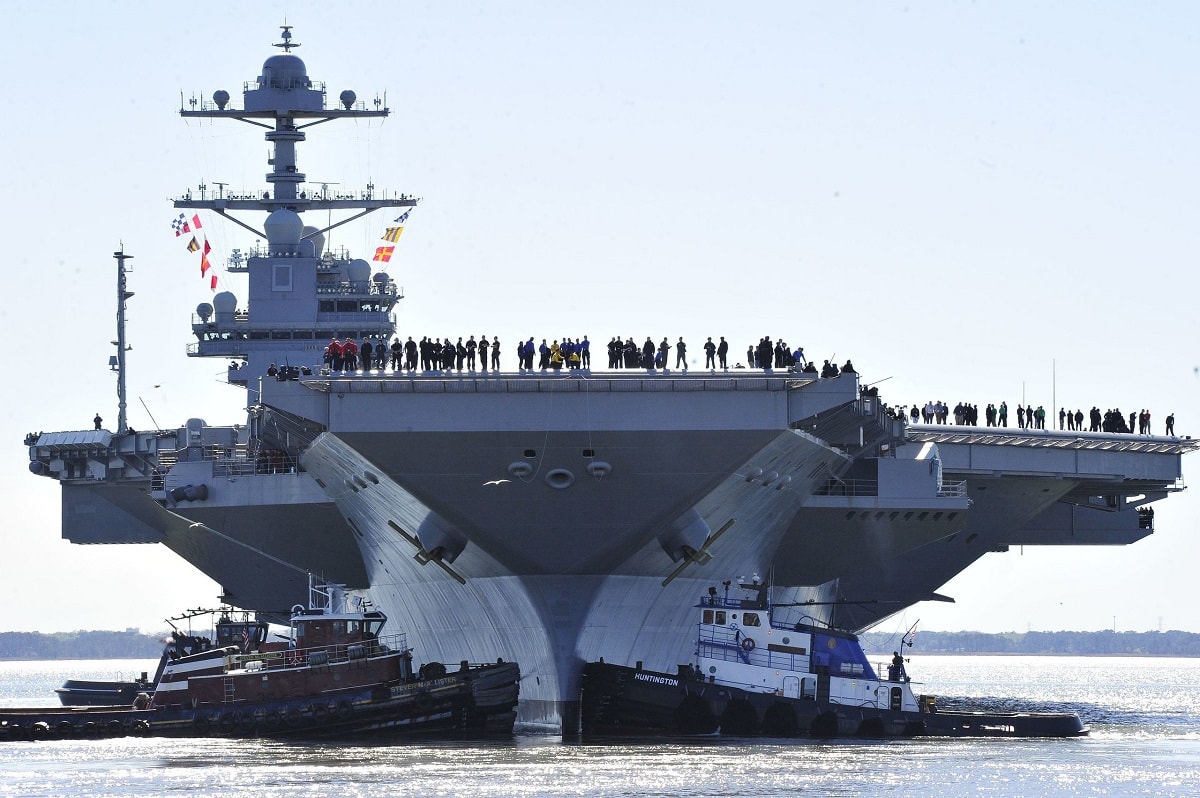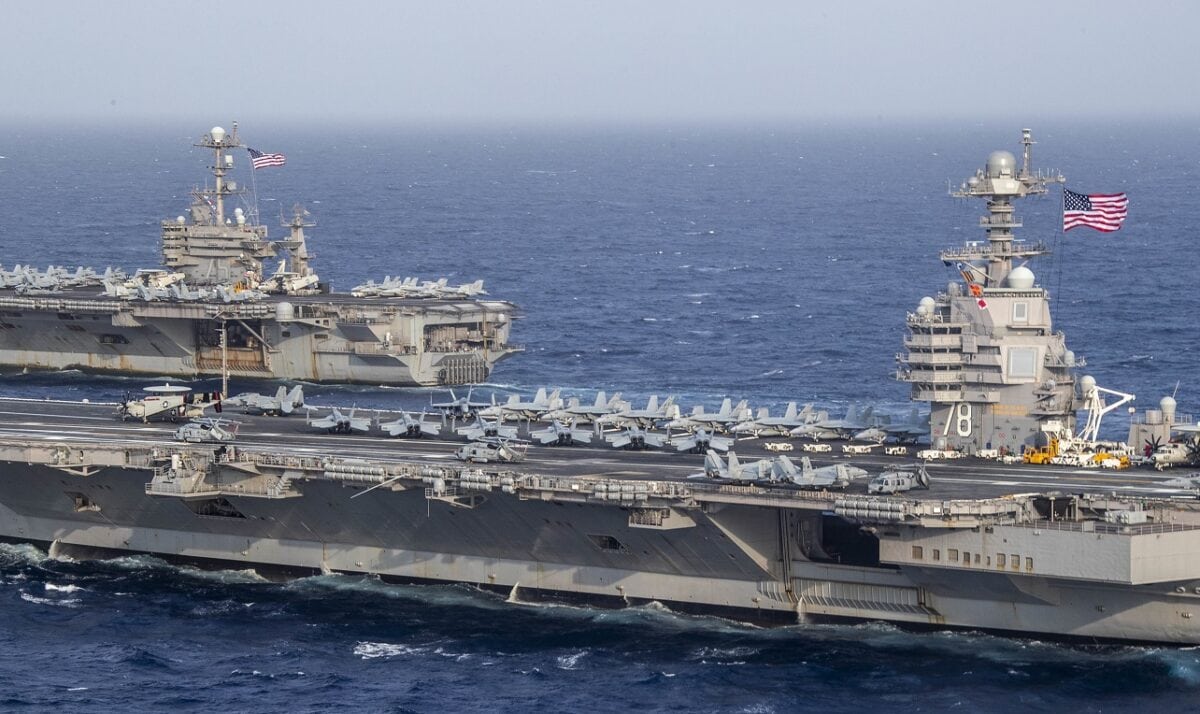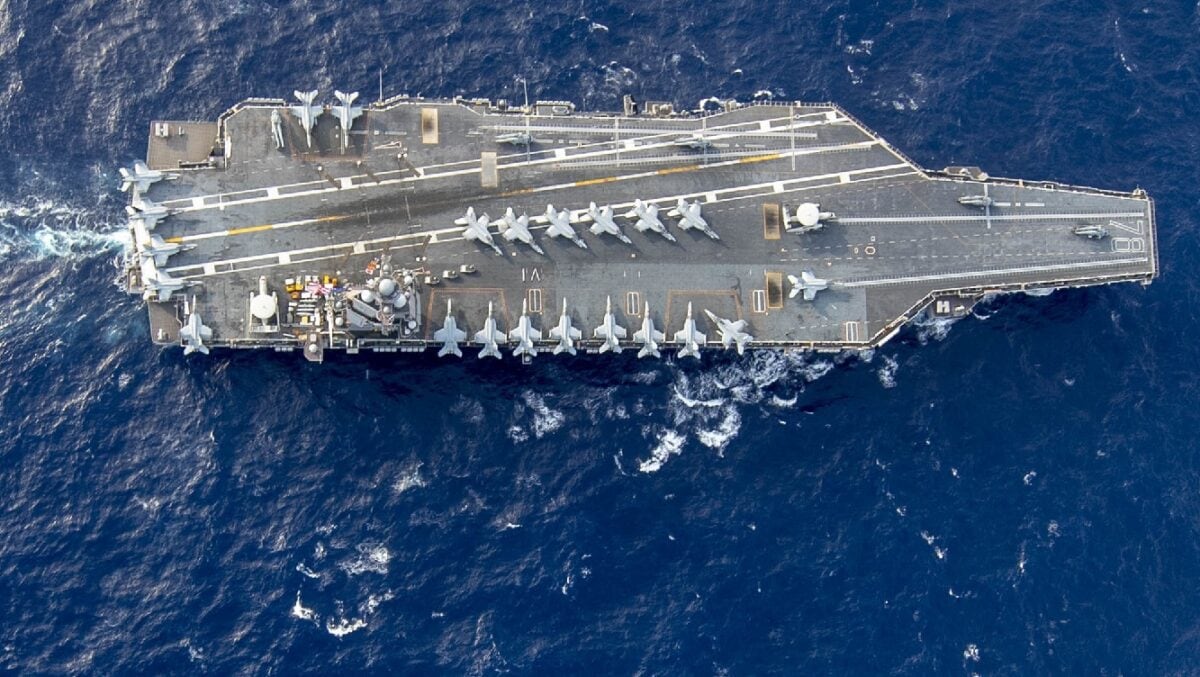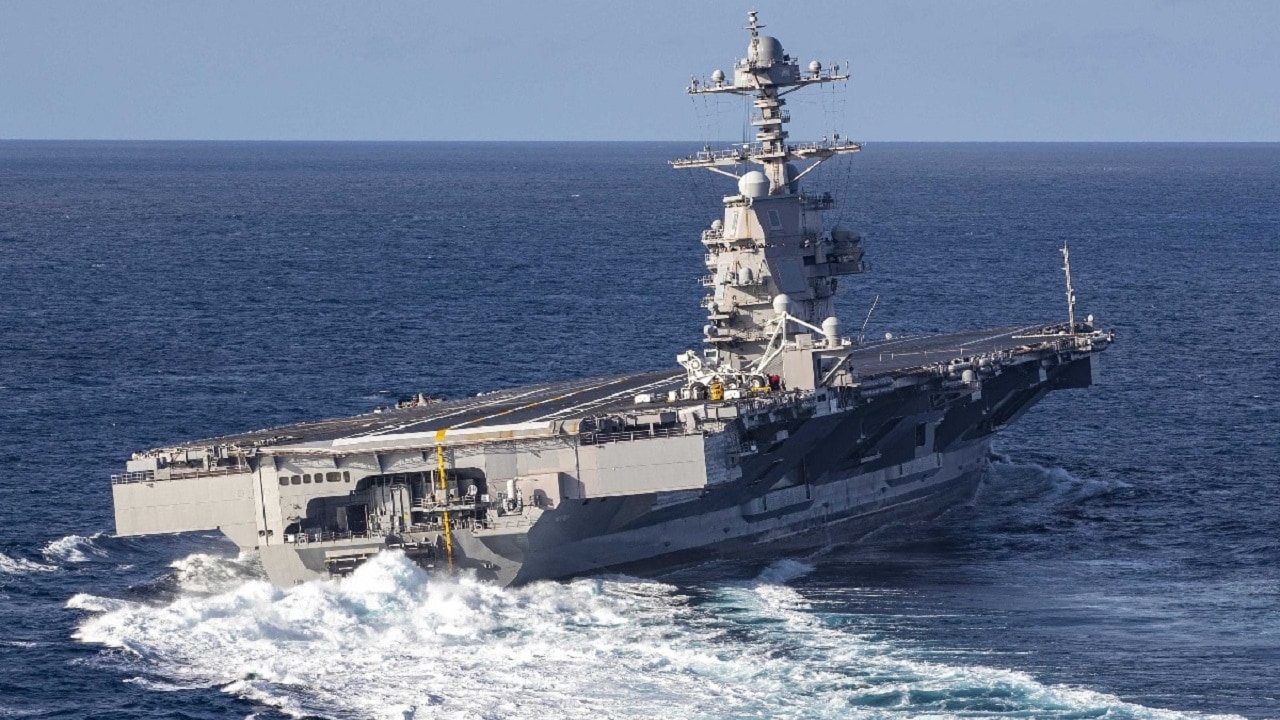Ford-Class – The US Navy Just Built a Massive Aircraft Carrier at a Massive Cost – The USS Gerald R. Ford aircraft carrier comes with a high price tag in return for its cutting-edge technology.
At $13.3 billion, this is around 30 percent more than what the Navy promised it would cost and two times the cost of the last flat-top built. America’s largest and most expensive carrier is exciting due to the modernization of traditional carrier tools such as arresting gear, elevators, and launch systems. The Ford is supposed to save billions over the next 50 years due to lower maintenance costs and the need for a smaller crew. But what exorbitant spending on trivial things it has endured – a clogged toilet, for example, set the Navy back $400,000.
Ballooning Costs Surprises the U.S. Government
There are four Ford-class carriers in various stages of construction and this supercarrier will eventually be replacing the entire aircraft carrier fleet. But it’s this construction that has ballooned the carrier’s cost and time to build. The cost estimate for the entire Ford-class is $120 billion versus the original estimate of $77.3 billion, according to a U.S. Government Accountability Office report.
Ford-Class: More Man Hours Than the Empire State Building
“More than five thousand shipbuilders worked an estimated 49 million hours to build the Ford. That’s seven times the hours logged when building the Empire State Building,” according to a video posted by Business Insider last September.
Better to Do Only One or Two New Technologies at a Time
The new technologies on the arresting gear, elevators, and launch mechanisms have all gone over budget, and naval leadership and think tank analysts believe that working on more than two new technologies at a time on one huge ship was a mistake. It led to five years in delays for the new carrier. For example, just researching and testing the electromagnetic catapult system cost one billion dollars, while the installation was $670 million.
According to some critics, the Navy should have proved out the technologies first before trying to force the modernizations on board as the Ford was built.
Go With Mature Technology First
Mandy Smithberger, at the Project On Government Oversight, or POGO, said some of the mistakes made by the Navy on large ship-building projects have shot the branch in the foot. The Navy’s practices of “developing really complex technology that’s expensive to maintain and not reliable,” has been a major hurdle. “It’s not necessarily that it’s new technology but it’s immature — so it has to be proven technology,” added Smithberger.
Ford-Class: Not All Is Bad
Sometimes the complaints about the Ford-class seem overly critical. When everything works according to plan, the flight deck operations run like a well-oiled machine. The Navy believes that due to the new arresting and launch systems, the carrier can run aircraft sorties up to 30 percent faster. More aircraft can fit on deck due to the ship’s smaller island. The advanced arresting gear is more efficient, and it is computer-aided for better safety for the aviators.
But the acquisition program has been problematic. One hopes that the lessons learned about the Ford can be used to improve the cost and schedule of other carriers in the class such as the Kennedy and Enterprise.

Image: Creative Commons.

The Ford-class aircraft carrier USS Gerald R. Ford (CVN 78) and the Nimitz-class aircraft carrier USS Harry S. Truman (CVN 75) transit the Atlantic Ocean June 4, 2020, marking the first time a Ford-class and a Nimitz-class aircraft carrier operated together underway. Ford is underway conducting integrated air wing operations, and the Harry S. Truman Carrier Strike Group remains at sea in the Atlantic as a certified carrier strike group force ready for tasking in order to protect the crew from the risks posed by COVID-19, following their successful deployment to the U.S. 5th and 6th Fleet areas of operation. (U.S. Navy photo by Mass Communication Specialist Seaman Riley McDowell)

The Ford-class aircraft carrier USS Gerald R. Ford (CVN 78) and the Nimitz-class aircraft carrier USS Harry S. Truman (CVN 75) transit the Atlantic Ocean June 4, 2020, marking the first time a Ford-class and a Nimitz-class aircraft carrier operated together underway. Ford is underway conducting integrated air wing operations, and the Harry S. Truman Carrier Strike Group remains at sea in the Atlantic as a certified carrier strike group force ready for tasking in order to protect the crew from the risks posed by COVID-19, following their successful deployment to the U.S. 5th and 6th Fleet areas of operation. (U.S. Navy photo by Mass Communication Specialist Seaman Riley McDowell)
The Worst Part Is Behind It on the Ford-Class
The Ford-class may be a cautionary tale, but it has made it past the most difficult parts of its acquisition cycle. The ship will be ready for combat this year and there are certainly dangerous neighborhoods the Navy must patrol. Therefore, the Navy will have a huge asset to lead carrier battle groups in hot spots around the world.
Now serving as 1945’s Defense and National Security Editor, Brent M. Eastwood, PhD, is the author of Humans, Machines, and Data: Future Trends in Warfare. He is an Emerging Threats expert and former U.S. Army Infantry officer. You can follow him on Twitter @BMEastwood.

